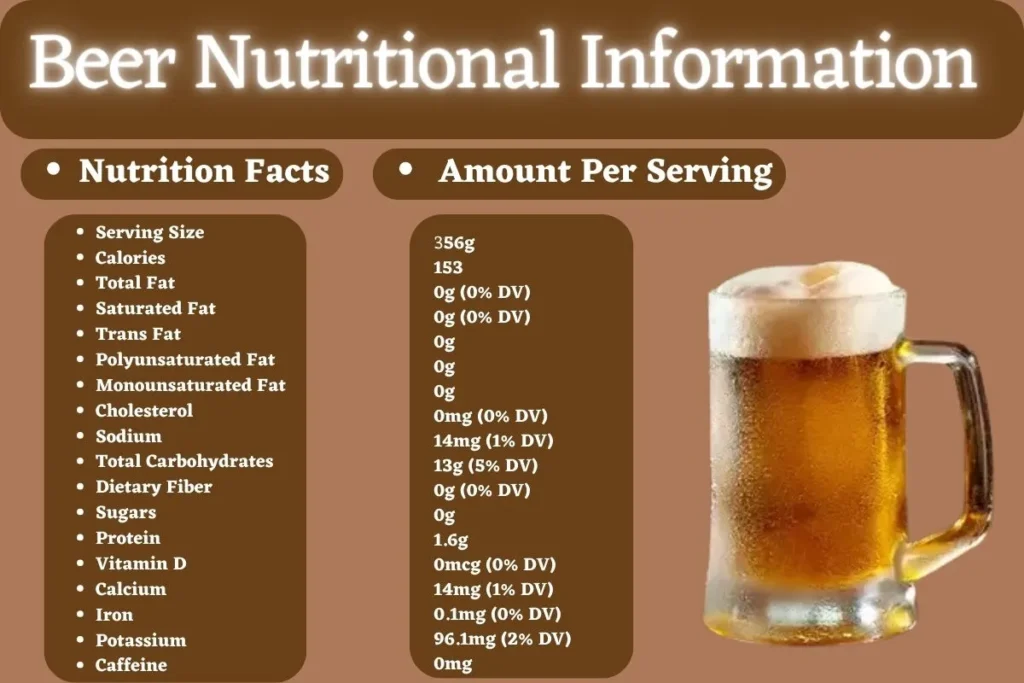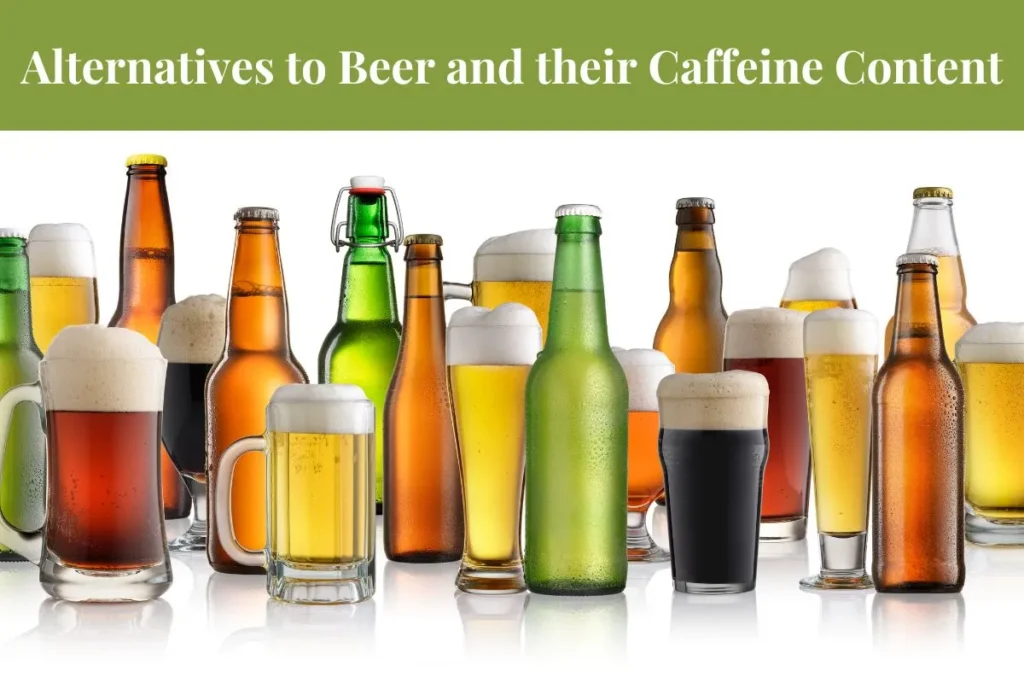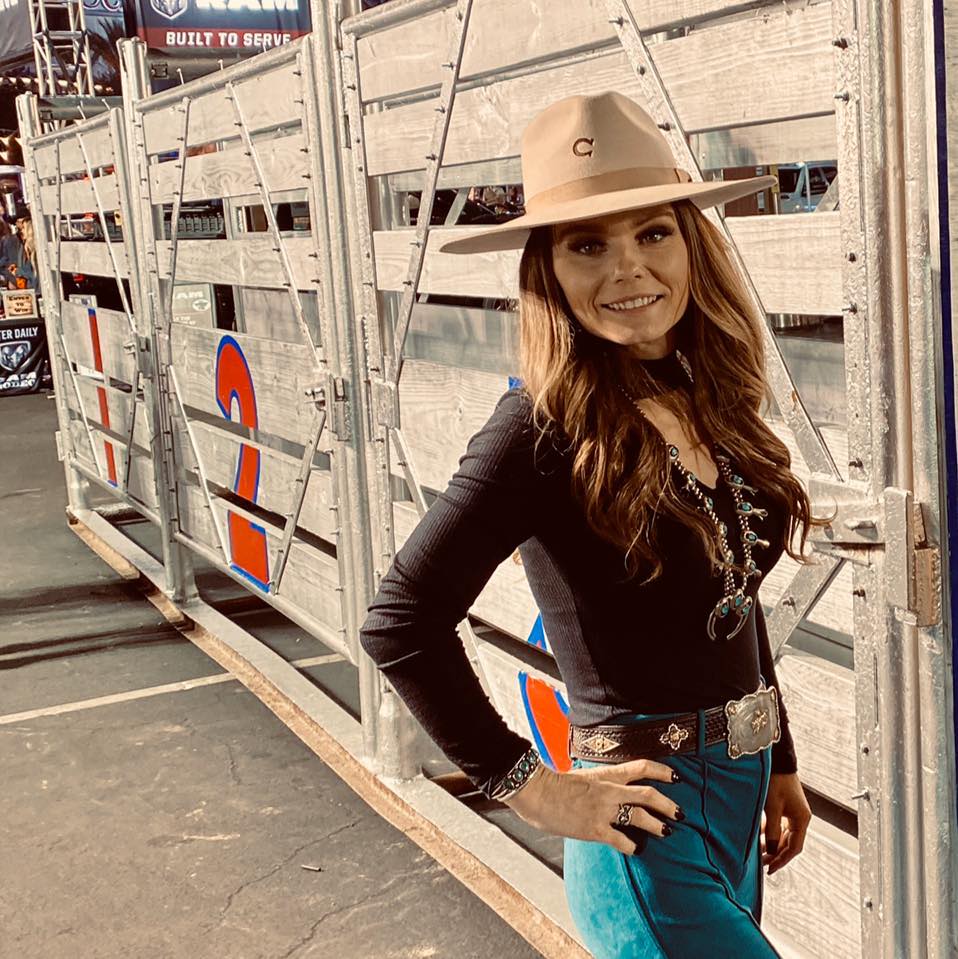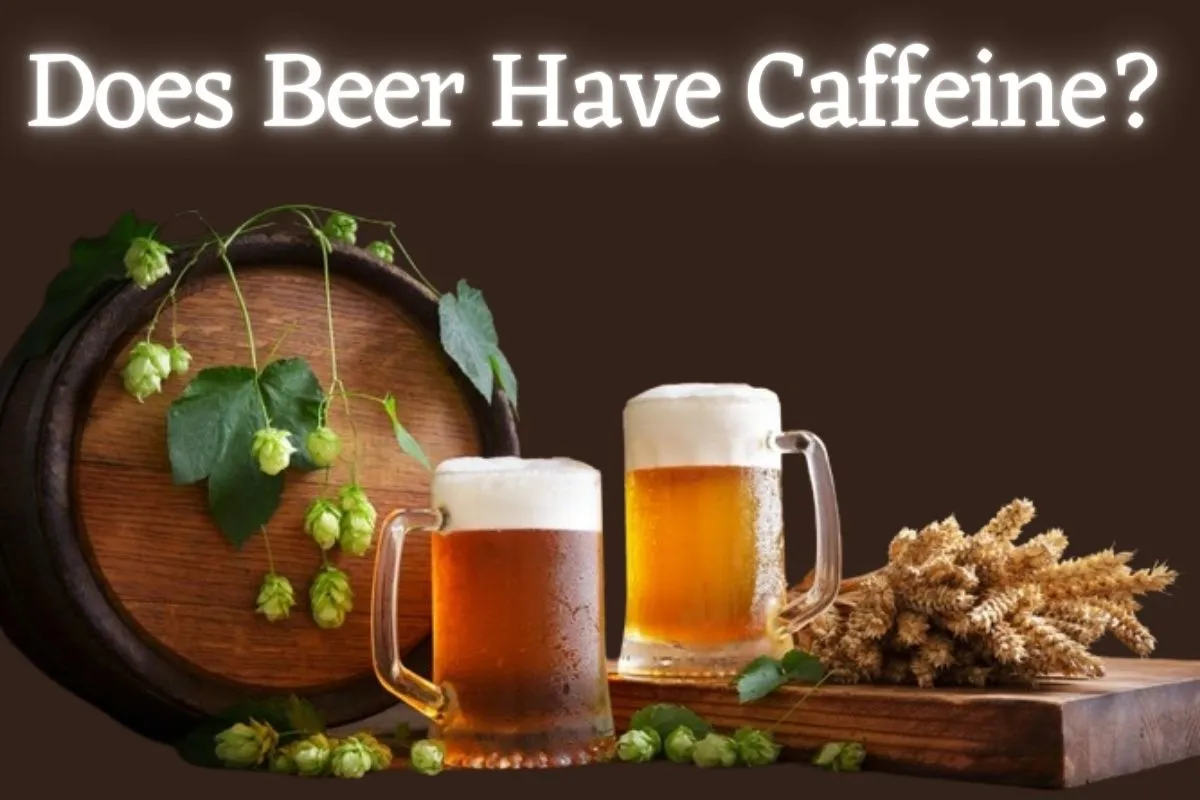Think you can down a few pints of beer without losing sleep? Think again! While beer doesn’t traditionally contain caffeine, that delicious stout or porter might just surprise you. Remember how those ancient civilizations brewed up beer for sustenance?
Well, nowadays brewers are getting creative by adding ingredients like coffee and tea – both of which naturally pack a caffeinated punch. So, before you settle in with that cold one, let’s explore the question: Does beer have caffeine?
Importance of Knowing Caffeine Content in Beer
Beer is one of the most popular beverages consumed worldwide, enjoyed for its diverse flavor profiles and social aspects.
While traditionally caffeine-free, a growing trend of coffee-infused beers and other variations means that understanding the caffeine content in beer is becoming increasingly relevant.
Factors like the type of beer added ingredients, and brewing methods can significantly affect caffeine content. Coffee stouts or tea-infused beers will naturally contain higher caffeine levels. It’s a common misconception that darker beers always have more caffeine – this isn’t true, as the roast level of the grain doesn’t directly correlate with caffeine content.
One of the primary benefits of knowing the caffeine content in beer is the ability to manage and moderate consumption. Caffeine, a stimulant, can have both positive and negative effects on the body, including improved alertness and concentration, but also potential downsides such as increased heart rate, insomnia, and anxiety in sensitive individuals.
Those sensitive to caffeine, individuals with sleep issues, pregnant women, and those on certain medications should be particularly cautious of their beer consumption. By being informed about the caffeine content of your chosen beer, you can make responsible choices that align with your individual needs and preferences.
Does Beer Have Caffeine?
No, Beer typically does not contain caffeine, as it is primarily made from water, grain (like barley or wheat), hops, and yeast. The traditional brewing process for beer does not involve the use of ingredients that naturally contain caffeine, such as coffee beans or tea leaves.
However, there are exceptions. Some specialty or craft beers might include ingredients that contain caffeine, such as coffee, tea, or chocolate, to achieve specific flavors. These types of beers would indeed have caffeine, but the amount can vary widely depending on the recipe and how much of these caffeine-containing ingredients are used.
If you’re avoiding caffeine for any reason, it’s a good idea to check the label or ask the brewer if the beer contains any added ingredients like coffee or chocolate that could contribute caffeine to the final product.
Beer Variants and their Caffeine Content
The world of beer is incredibly diverse, offering a seemingly endless array of styles and variations to explore. Let’s dive a little deeper into the major categories and some of the most popular types of beer:
Pale Ales:
These beers are generally characterized by fruity, hoppy aromas and flavors, with a moderate level of bitterness. They range in color from golden to amber. Popular examples include American Pale Ales (known for their citrusy, piney hop profile), and English Pale Ales (often showcasing more earthy, floral hop characteristics).
India Pale Ales (IPAs):
IPAs are renowned for their intense hop flavors and bitterness. This category offers a wealth of diversity. American IPAs burst with bold, citrusy, and piney hop notes, while English IPAs lean towards a more earthy and floral hop character. New England IPAs (or NEIPAs) are known for their hazy appearance, juicy tropical fruit flavors, and softer bitterness.
Wheat Beers:
These beers incorporate a significant portion of wheat in their grain bill, resulting in a refreshing and often slightly tangy character. Flavors of banana, clove, or citrus are common depending on the style. Popular examples include German Hefeweizens, Belgian Witbiers, and American Wheat beers.
Stouts:
Dark and roasty, stouts deliver rich flavors of coffee, chocolate, and sometimes hints of caramel or dried fruit. Dry Irish Stouts are famous for their roasty bite, while Oatmeal Stouts offer a velvety smoothness. Imperial Stouts are intensely bold and often high in alcohol content.
Porters:
Similar to stouts, porters feature roasted flavors but are typically less assertive, emphasizing notes of chocolate and caramel.
Brown Ales:
These beers are malt-forward, delivering flavors of caramel, nuts, and sometimes a hint of toast. English Brown Ales are known for their mild, balanced character, while American Brown Ales often feature a slightly hoppier profile.
Saisons:
Originally brewed as farmhouse ales in Belgium, Saisons are known for their fruity, spicy, and often peppery flavors, along with a characteristic dry finish.
Sours:
This category encompasses a wide variety of beers that showcase intentional tartness and acidity. Wild yeast and bacteria are often used in the fermentation process. Popular sour styles include Berliner Weisse (light and refreshing with a lemony tartness), Lambics (complex and funky with fruit flavors), Flanders Red Ales (deeply sour with notes of cherries and balsamic), and Gose (salty and slightly sour).
Pilsners:
These crisp and refreshing beers are known for their subtle hop bitterness and light golden color. German Pilsners showcase noble hop varieties with floral and spicy notes, while Czech Pilsners are renowned for their classic bready malt character.
Amber Lagers:
Medium-bodied and malty, amber lagers offer a touch of sweetness balanced by a hint of hop bitterness. Popular styles include Vienna Lagers (known for their toasty malt character) and Oktoberfest/Märzen beers (rich and malty with a smooth finish).
Pale Lagers:
This category encompasses the most common beer styles worldwide, known for their light flavor, crispness, and pale straw color. Mass-market American lagers fall into this category.
Dark Lagers:
These beers feature a darker color and hints of roasted malt flavors. Dunkels offer a malty sweetness with hints of chocolate and nuts, while Schwarzbiers are even darker with a subtle roastiness.
Fruit Beers:
From classic Belgian Lambics infused with raspberries or cherries, to modern IPAs bursting with mango and tropical flavors, fruit additions are incredibly popular across various styles.
Coffee/Tea Beers:
Coffee stouts are a classic, but brewers are increasingly experimenting with adding tea to various styles, offering a unique flavor dimension.
Spiced Beers:
Think of those cozy holiday beers featuring warming spices like cinnamon, ginger, nutmeg, or pumpkin spice.
Smoked Beers:
These beers feature a distinctive smoky flavor imparted by using malts that have been dried over wood fires.
Most traditional beer styles are naturally caffeine-free. This includes the vast majority of ales (like pale ales, wheat beers, brown ales, saisons, and standard sours), lagers (like Pilsners, amber lagers, pale lagers, and dark lagers), along with classic stouts and porters.
Unless they specifically include coffee, tea, or other caffeinated ingredients, fruit beers, spiced beers, and smoked beers will also be caffeine-free.
The main source of caffeine in beer comes from the intentional addition of coffee to create coffee stouts and porters. The caffeine content in these beers can vary significantly depending on the type and amount of coffee used, as well as the brewing methods.
Another potential, though less common, source of caffeine is in experimental IPAs. Some brewers are starting to infuse certain IPAs with tea, which could introduce a small amount of caffeine.
Finally, if a beer is labeled as a “hybrid” or includes chocolate (which contains trace amounts of caffeine) or other potentially caffeinated ingredients, it’s possible it could have some caffeine content.
List of Ingredients in Beer
Beer is a complex beverage made from a variety of ingredients, each contributing to its unique flavor, aroma, and appearance. Here are the typical components of beer:
- Water: Beer’s main constituent, water, makes up the majority of its volume. The ultimate flavor and properties of the beer are greatly influenced by the quality of the water used in the brewing process.
- Malted Barley: The most popular grain for making beer is barley. In order to activate the enzymes that transform starches into fermentable sugars during the brewing process, malting is achieved by soaking, germinating, and drying the barley grains.
- Hops: Hops, which are the blossoms of the Hopulus lupulus plant, are mostly used in beer as a natural preservative and flavoring. They impart bitterness, aroma, and flavor to the beer and help balance the sweetness of the malt.
- Yeast: The microbe yeast is in charge of fermentation, which is the process that turns glucose into carbon dioxide and alcohol. Different strains of yeast can affect the flavor, fragrance, and overall character of the beer.
- Adjunct Grains: In addition to barley, brewers may use adjunct grains such as wheat, corn, rice, oats, or rye to supplement the malt bill and achieve specific flavor profiles or characteristics in the beer.
- Flavorings and Spices: Some beer styles incorporate additional flavorings and spices, such as fruits, herbs, spices, or botanicals, to enhance complexity and create unique taste experiences.
- Sugar: Additional sugars may be added to the beer during brewing to adjust sweetness, increase alcohol content, or influence fermentation characteristics.
- Finings: Finings agents are substances added to beer to clarify or stabilize it by removing suspended particles and proteins, resulting in a clear and bright appearance.
- Carbonation: To get the right amount of effervescence, carbonation can be produced artificially by infusing carbon dioxide into the beer or spontaneously through fermentation.
- Preservatives: While traditional beer ingredients typically do not include preservatives, some commercial beers may contain additives or preservatives to extend shelf life or enhance stability.
- Flavor Enhancers: Some brewers may use specialized ingredients or additives to enhance specific flavors or characteristics in their beer, such as acidity regulators or flavor enhancers.
Beer Nutritional Information

A typical serving of beer (approximately 356g or about 12 ounces) contains around 153 calories. It’s worth noting that beer is virtually fat-free, containing zero grams of saturated, trans, polyunsaturated, or monounsaturated fats. Additionally, beer contains no cholesterol.
In terms of macronutrients, it provides 13 grams of carbohydrates with zero grams of dietary fiber or sugars. Beer also offers 1.6 grams of protein. When it comes to micronutrients, beer provides trace amounts of vitamin D, calcium, and iron. Also, traditional beer does not contain any caffeine.
| Nutrition Facts | Amount Per Serving |
| Serving Size | 356g |
| Calories | 153 |
| Total Fat | 0g (0% DV) |
| Saturated Fat | 0g (0% DV) |
| Trans Fat | 0g |
| Polyunsaturated Fat | 0g |
| Monounsaturated Fat | 0g |
| Cholesterol | 0mg (0% DV) |
| Sodium | 14mg (1% DV) |
| Total Carbohydrates | 13g (5% DV) |
| Dietary Fiber | 0g (0% DV) |
| Sugars | 0g |
| Protein | 1.6g |
| Vitamin D | 0mcg (0% DV) |
| Calcium | 14mg (1% DV) |
| Iron | 0.1mg (0% DV) |
| Potassium | 96.1mg (2% DV) |
| Caffeine | 0mg |
👉Does Mug Root Beer Have Caffeine?
👉Does Vitaminwater Have Caffeine?
Alternatives to Beer and their Caffeine Content

There are plenty of alternatives to beer available for individuals looking for different beverage options. Here are some popular alternatives:
Red Wine:
Red wine, made from fermented grapes, is a classic beverage that comes with the bonus of being naturally caffeine-free. Enjoy a glass without worry about it interfering with your sleep or adding extra stimulation.
Port Wine:
Port wine is a fortified wine, meaning that distilled spirits are added during the fermentation process. Despite this addition, port wine remains caffeine-free, allowing you to indulge in its rich, sweet flavor without any caffeine jitters.
Cider:
Cider, crafted from fermented apples, is another delicious and caffeine-free alternative to beer. Whether you prefer sweet, dry, or spiced varieties, you can enjoy its refreshing flavor without any worries about added stimulants.
Whiskey:
Whiskey, a distilled spirit made from fermented grains, offers a bold, complex flavor profile. Like most hard liquors, whiskey is naturally caffeine-free, making it suitable for those needing a caffeine-free drink option.
Gin:
Gin, flavored with juniper berries and other botanicals, is another distilled spirit that lacks caffeine. Enjoy a classic gin and tonic or explore the wide array of gin-based cocktails, knowing you won’t be adding any extra caffeine to your system.
Rum:
Rum, distilled from fermented sugarcane, delivers a sweet and tropical flavor. Like other hard liquors, rum is caffeine-free, so feel free to indulge in a rum-based drink without worrying about caffeine’s stimulatory effects.
Tequila:
Tequila, made from the agave plant, is another distilled spirit free of caffeine. Whether sipping on a classic margarita or exploring a more complex tequila-based cocktail, you can rest assured that you’re not adding caffeine to your drink.
Kombucha:
Kombucha, a fermented tea with a tangy flavor and a slight effervescence, does contain some caffeine. On average, a 247g serving of kombucha delivers about 47.5mg of caffeine. This is significantly less than a cup of coffee but certainly worth considering if you’re sensitive to caffeine or seeking a truly caffeine-free beverage.
| Beverage | Caffeine Content |
| Red Wine | Caffeine-free |
| Port Wine | Caffeine-free |
| Cider | Caffeine-free |
| Whiskey | Caffeine-free |
| Gin | Caffeine-free |
| Rum | Caffeine-free |
| Tequila | Caffeine-free |
| Kombucha | 47.5mg per 247g serving |
Conclusion
Does beer have caffeine? While traditional beer is gloriously caffeine-free, the world of craft brewing is constantly pushing boundaries. If you see coffee, tea, or any other potentially caffeine-holding ingredients on the label of your chosen brew, be aware that there might be a little kick in your glass.
For those sensitive to caffeine or seeking a completely caffeine-free experience, always opt for traditional styles or check with the brewery for more information. By being mindful of ingredients and understanding the potential caffeine content, you can make informed choices that best suit your needs and preferences as you enjoy the vast world of beer.
Frequently Asked Questions
Q1. Is caffeine naturally occurring in beer?
No, traditional beer made with water, grains, hops, and yeast does not contain caffeine. However, some craft beers include coffee, tea, or other caffeinated ingredients, introducing caffeine into the beverage.
Q2. Can caffeine content vary within the same type of beer?
Absolutely! Even among coffee stouts, the amount of coffee used and the brewing methods can significantly impact caffeine levels. Two seemingly similar stouts from different breweries could have varying caffeine content.
Q3. Is beer 100% alcohol?
No. Beer contains alcohol, but its alcohol percentage varies greatly, ranging from very low alcohol beers (below 1%) to strong beers exceeding 10% alcohol by volume (ABV). Water makes up the majority of beer’s composition.
Q4. Is 1 beer a day healthy?
The health implications of daily beer consumption are complex. There’s limited evidence that moderate consumption might offer some benefits, but excessive consumption has well-documented negative health effects. Always consult a doctor about healthy alcohol intake for your unique situation.
Q5. Does black beer have caffeine?
No, black beers don’t inherently have caffeine. The dark color of black beers (like stouts and porters) comes from heavily roasted grains, not caffeine content. The misconception stems from the popularity of coffee stouts and porters. These beers are specifically brewed with coffee, adding the caffeine element.

Rossi Glover, the passionate Owner of Grand Lake Coffee, infuses every cup with her love for coffee and dedication to quality. With an extensive background in the art and science of coffee, Rossi is not just a connoisseur but a storyteller, sharing the intricate tales behind each brew.

